The story of Chloé founder Gaby Aghion’s ‘ready to wear’ revolution
Gabriella “Gaby” Aghion would be proud. Amid a flurry of fashion houses appointing White men as their new designers as the Spring-Summer 2024 runways wrapped up, Chloé, the French fashion label she founded seven decades ago, announced Chemena Kamali as its next creative director, a hire true to Aghion’s vision for Chloé being a label designed for women by women.
Kamali, who has already had two stints at Chloé under its past designers Phoebe Philo and Clare Waight Keller, follows in the footsteps of women who’ve helped to define and curate the brand’s aesthetic over the last three decades, among them Stella McCartney, Natacha Ramsay-Levi, Waight Keller, Philo — who is scheduled to launch her highly-anticipated eponymous line on October 30 — and the label’s outgoing creative director, Gabriela Hearst.
But just who was Aghion, the Jewish Egyptian entrepreneur who started Chloé, one of the first luxury women’s ready-to-wear brands, in 1952? The Jewish Museum in New York seeks to answer that question with a new exhibition, “Mood of the Moment: Gaby Aghion and the House of Chloé,” on view until February 18, 2024.
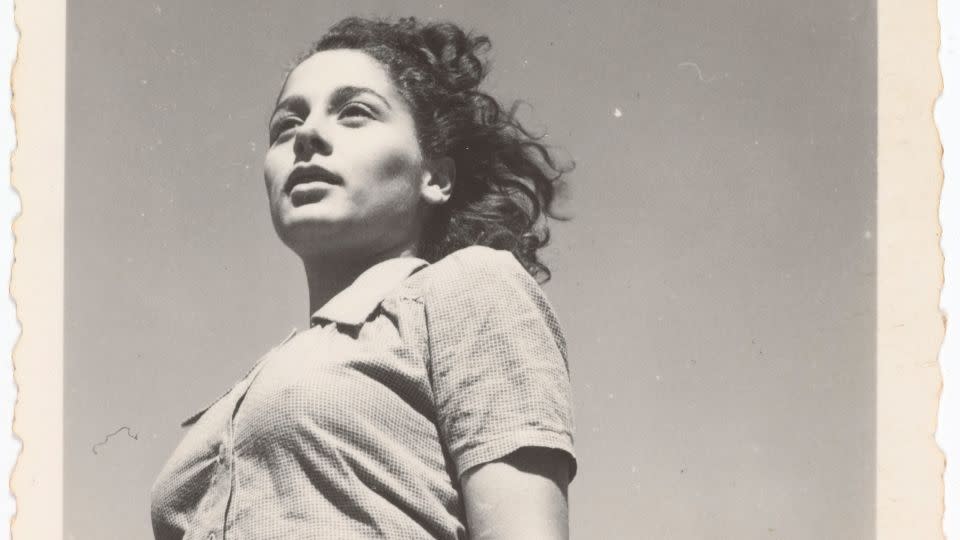
“The Jewish Museum has a history of showcasing the legacies of incredible Jewish women entrepreneurs, including Helena Rubinstein and Edith Halpert — it is always the right time to celebrate women,” said guest curator Choghakate Kazarian. “Moreover, Gaby Aghion’s contributions to fashion history and modern dress practice have largely been overlooked in fashion discourse.”
Aghion was born to a wealthy family in Alexandria, Egypt, in 1921. Like most well-to-do people in Egypt at the time, she learned French. As a young woman, she spent her free time flipping through pages of French fashion magazines and, with her mother, would invite seamstresses to recreate the designs they saw.
Aghion first came to Paris in 1939, accompanying her husband Raymond as he studied medicine, but the couple returned to Egypt when World War II broke out. They returned in 1945, this time with Aghion herself also studying at the École des Sciences Politiques. She was excited to be in the epicenter of French fashion, and immersed herself into Paris’ café culture, socializing with the writers, artists, and philosophers of the time.
In the 1950s it was rare to purchase clothing off the rack; wealthy women could afford to dress themselves in decadent couture creations, but the masses had to have copies made at home or assembled by seamstresses. (Aghion’s personal wardrobe was a combination of both, said Kazarian.) She wanted to change that, and “offer a line of ready-to wear-clothes with a with a specific style — not just copies,” said Kazarian. So she went from the client to the businesswoman and started her own label.
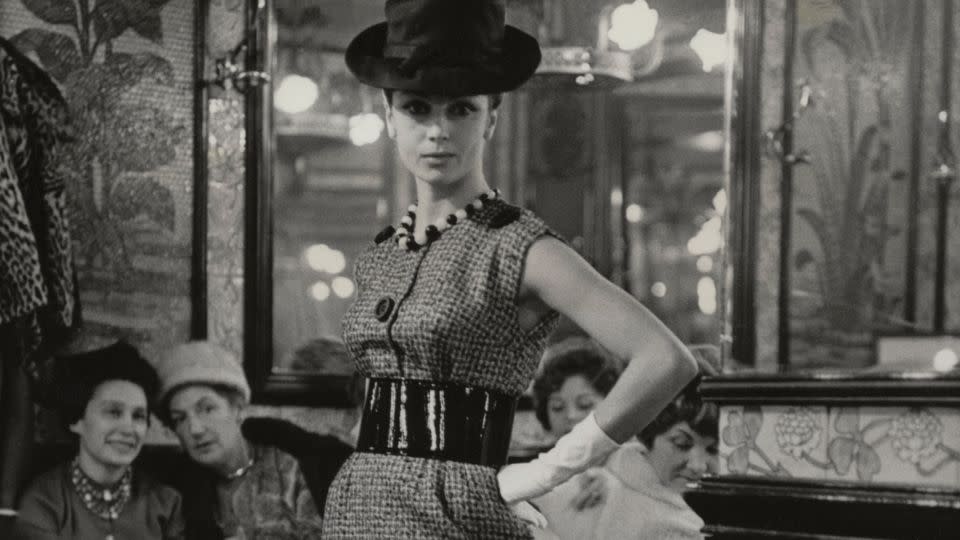
Aghion called the label Chloé because it was too much of a risk to use her own name. “She couldn’t use her husband’s name, because it was not well-seen for a woman of her status to work,” said Kazarian. “She couldn’t use her maiden name because she didn’t want to put shame to her family if she failed. So she borrowed the name of a friend… She said that she loved the roundness of the letters.”
The label launched with six dresses “inspired by what we wore in the sporting clubs in Egypt,” Aghion said at the time. Chloé was much more relaxed and lighter than the stiff proper suits of the time, like Saint Laurent’s New Look collection for Dior, for example. And she eschewed the typical methods for showing collections for casual presentations over breakfast at establishments she frequented, like Café de Flore on Paris’ Left Bank.
Curating the ‘mood of the moment’
The exhibition opens with three ensembles from the house’s early years: an original Embrun dress Aghion designed with the English-Irish model Maxime de la Falaise in 1960, flanked by a 1964 gold skirt suit (from 1964) and a ruffled wool crepe wrap dress (from 1961) standing before a grid of images from one of its first fashion presentations.
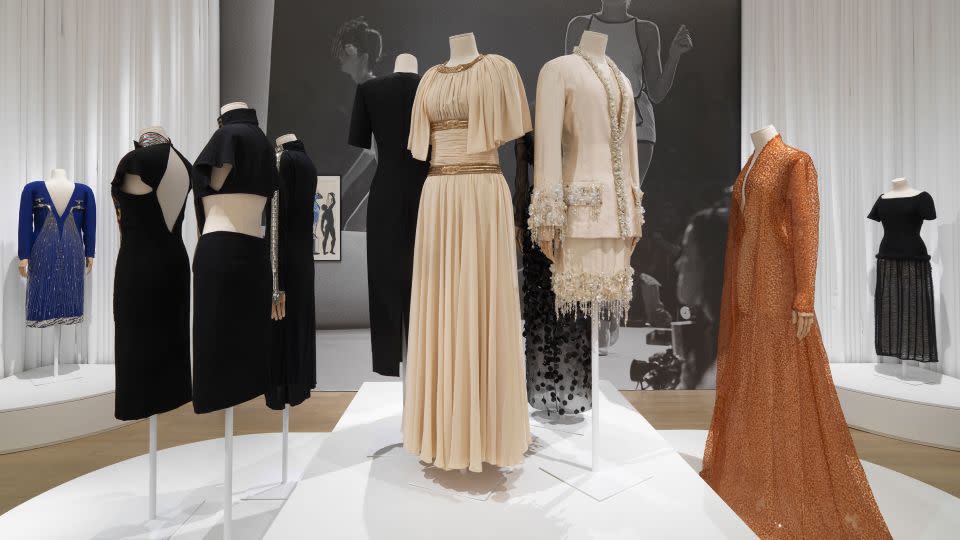
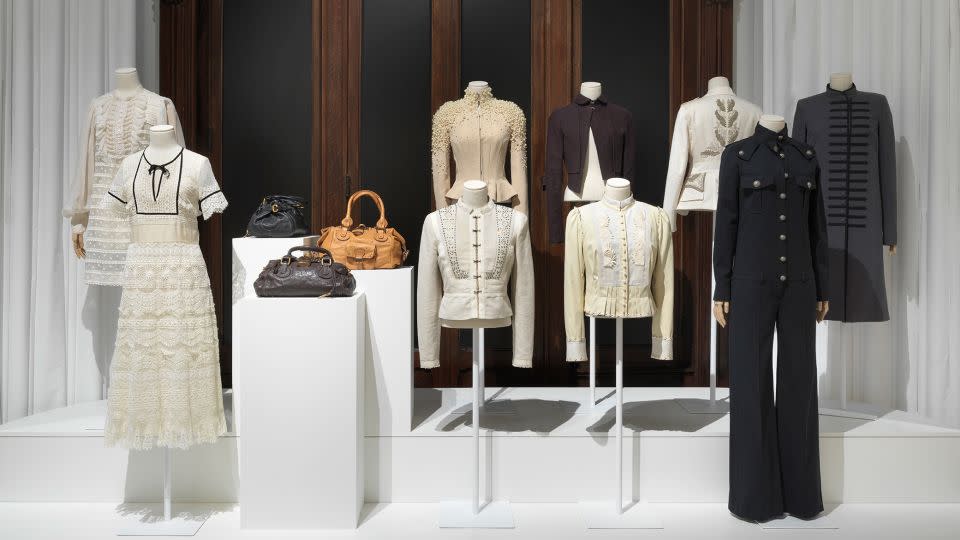
While she had an eye for fashion, Aghion lacked when it came to design skills; Chloé at first functioned as a collective comprised of different freelance designers whose designs she would approve. These designers included a young Karl Lagerfeld, who joined Chloé in 1963 and was given sole control over the house’s designs in 1966. (Aghion was still in charge, though.) It was Lagerfeld who said of his work at Chloé in the ‘70s that, “with each collection, I tried to crystallize the mood of the moment,” Kazarian said of the quote which inspired the exhibition’s title.
Designs by Lagerfeld, who continued working at Chloé until 1983, and returned to the fashion house for a second stint as creative director from 1992 to 1997, make up the majority of the exhibition: colorful ‘60s shift dresses, like the Bergamotte, a yellow dress adorned with sequins and metal studs, to more delicate designs from the ‘70s and then fashions from the outrageous ‘80s, like a playful Cintre dress that features a very meta, sequined-covered embellishment of a minidress complete with the Chloé label on a hanger.
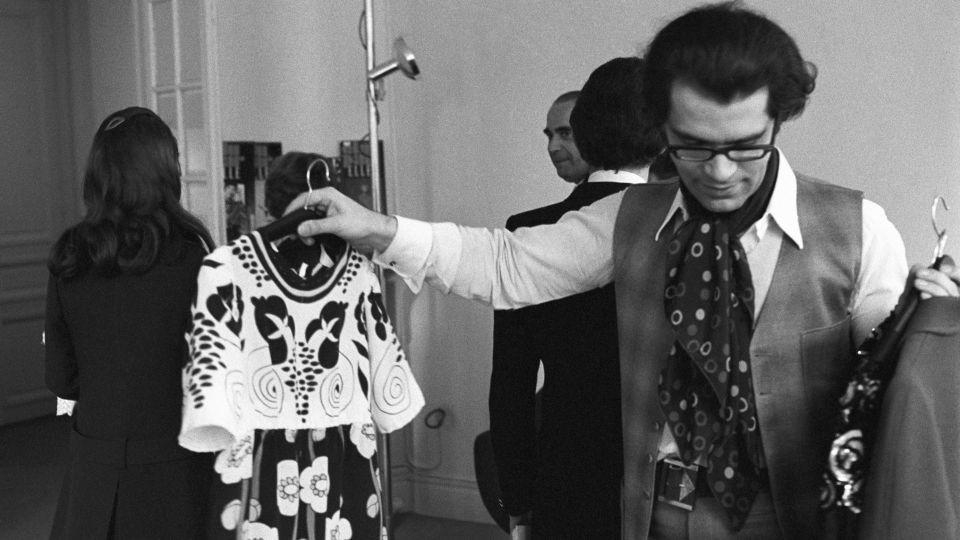
After Lagerfeld first left Chloé in 1983 to work at Chanel, the house returned to working with a designer collective, before naming French fashion designer Martine Sitbon its first female artistic director in 1987. And following Lagerfeld’s second departure in 1997, the label took a chance on McCartney, then an unknown young designer. It paid off.
McCartney channeled the “cool Britannia” spirit of the time into her designs, as well as her love of horse riding through countless equestrian references. Her assistant Philo followed, curating the minimal romanticism through sleek jumpsuits dotted with silver buttons or breezy silk chiffon dresses accented with grosgrain ribbon appliqués — not to mention the iconic Paddington bag, of course — that earned her a cult following, before the most recent creative directors, Waight Keller, Natacha Ramsay-Levi, Hearst and now Kamali.
(Aghion sold her stake in the business in 1985 to Dunhill Holdings — the luxury conglomerate now named Richemont, which still owns Chloé today — but remained close to the house until her death in 2014.)
“There’s really this mirroring between the designer and the consumer,” said Kazarian of the Chloé brand. “Each designer had created a clear woman according to their own style, their own personality.” They referenced the house’s archives while adding their own viewpoints and recruiting artists like Rita Ackermann or bold names like Angelina Jolie for collaborations. Perhaps then, it’s the mood of her moment?
Amid a multitude of blouses — one of Chloé’s signature garments — the exhibition closes with an ode to Aghion’s signature uniform, a black skirt paired with a waistcoat and a silk blouse in a beige hue. (“Egypt is a color for me,” she once reportedly said. “The sand is the most beautiful sand I have ever seen. A rose-tinted beige. It feels like silk in your hands.”)
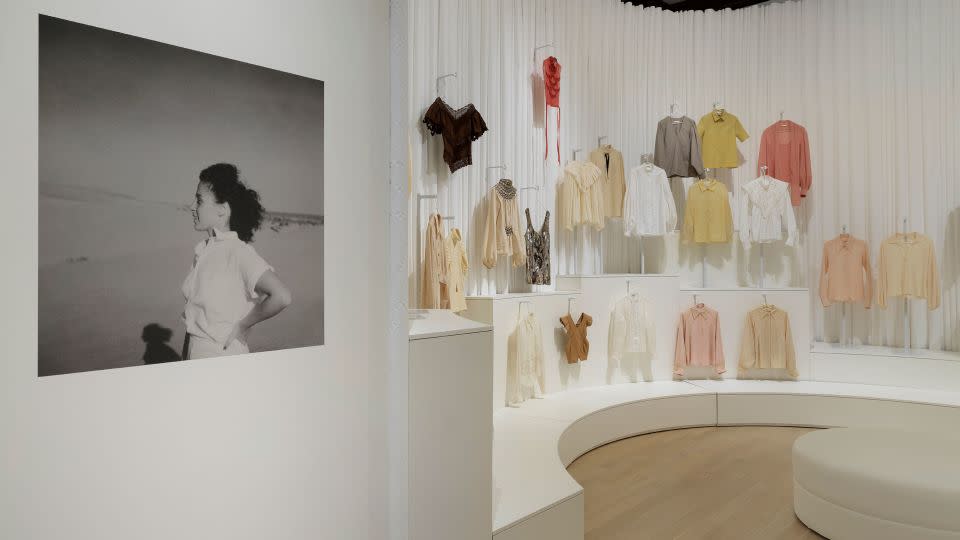
“She really put forth femininity as a driving force,” said Kazarian of Aghion and her legacy. “It’s women dressing women. That was, and this is, (the) spirit of sorority and sisterhood at Chloé.”
“Mood of the moment: Gaby Aghion and the house of Chloé” is on show at the Jewish Museum in New York until Feb. 18, 2024.
For more CNN news and newsletters create an account at CNN.com
